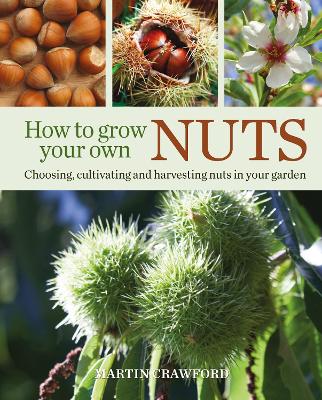
A comprehensive guide to growing, harvesting and processing nuts, written by forest gardening expert Martin Crawford. Nut trees are perennials, requiring little maintenance or soil cultivation, so it is no surprise that nuts are such a popular forest garden crop. A crucial source of protein and a delicious snack, nuts also have a number of surprising health benefits. They lower blood pressure, are full of antioxidants, and decrease the risk of heart and neurodegenerative diseases. Filled with gorgeous illustrations of trees and nuts, How to Grow Your Own Nuts contains old favourites like hazelnuts and walnuts alongside less common varieties such as hickories and butternuts and the exotically named chinkapin. It considers how nuts can be planted in a variety of ways: singly in a small area, in an orchard or nuttery, as silvopasture around grazing animals, in alley cropping between cereal crops or intercropping between fruit bushes. This beautiful guide also features a handy A-Z, which details nut trees’ many secondary uses from timber, oil, dyes, fodder and cosmetics to medicines and honey. Martin also discusses how the beautiful spring blossom is attractive to bees, particularly from almond and sweet chestnut trees, making them excellent for supporting pollinators. Whether you are planning to grow nuts at home or commercially, this book is essential reading.
| ISBN: | 9780857843937 |
| Publication date: | 6th October 2016 |
| Author: | Martin Crawford, Joanna Brown |
| Publisher: | Green Books an imprint of Bloomsbury Publishing PLC |
| Format: | Hardback |
| Pagination: | 320 pages |
| Genres: |
Gardening: plants and cultivation guides Commercial horticulture Organic gardening Self-sufficiency and ‘green’ lifestyle |